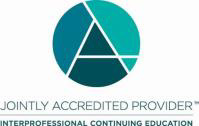WMJ Vol 120: The Adaptive Learner: How Faculty and Medical Students’ Perceptions of Learning Needs and Desires Differ
ABSTRACT
Problem Considered: Medical schools historically have utilized instructor-centered lectures to teach medical students the basic sciences. Several commercial electronic-based resources are now available to enhance lecture-based content. This study examines perceptions between students and faculty regarding the efficacy of lecture-based teaching and learning strategies used by students overall.
Research Methods: The authors distributed surveys to medical students and basic science teaching faculty at the Medical College of Wisconsin. Survey items used categorical and 10-point scales and open-ended text response. Mean scores were compared with independent t tests and Cohen d effect sizes. Pearson (r) and Spearman rho (ρ) correlations were used for relational analysis. IBM SPSS 24.0 was used for statistical analysis, NVivo 11 was used for qualitative analysis.
Results: Faculty’s perception of meeting students’ learning needs was rated significantly higher (mean [SD] = 7.3 [1.3]) than students (5.9 [2.0]) (Cohen d = 1.0/P < .001). There was a significant negative correlation between lectures meeting students’ learning needs and time students spent outside of lecture seeking supplemental learning resources (ρ = -0.4/P < .001). Students highlighted their use of personal learning strategies, desire for equitable access to resources, and preparation for national board examinations. Faculty emphasized their perceptions of learning resources, recognition of learning styles, time restrictions, and desire to utilize diverse teaching methods.
Conclusions: Student and faculty perceptions regarding student learning needs were significantly different. Students use lectures extensively, but additionally add to the financial burden of medical school by personally funding supplemental resources. This study helps bridge the gap between medical students and faculty regarding what educational tools are best suited to support a student population with increasingly diverse learning needs.
Intended Audience
The target audience for this journal-based activity is healthcare providers caring for the people and communities of Wisconsin and beyond.
Learning Objectives
As a result of this journal-based activity, learners will be able to:
- Identify the disconnect between the learning methods that students desire versus what they are currently being provided.
- Illustrate the many ways in which present day medical students are gaining knowledge, including usage of supplemental electronic resources.
- Summarize the challenges that medical students and faculty are faced with in designing the ideal curriculum to meet both party's needs.
FACULTY DISCLOSURE
It is the policy of the University of Wisconsin–Madison Interprofessional Continuing Education Partnership (ICEP) to identify, mitigate and disclose all relevant financial relationships with ineligible companies* held by the speakers/presenters, authors, planners, and other persons who may influence content of this accredited continuing education (CE). In addition, speakers, presenters and authors must disclose any planned discussion of unlabeled/unapproved uses of drugs or devices during their presentation.
For this accredited continuing education activity all relevant financial relationships have been mitigated and detailed disclosures are listed below.
| Name of Individual | Individual's Role in Activity | Name of Commercial Interest & | Discussion of |
| Terese Bailey, BS | Accreditation Specialist | No relevant relationships with ineligible companies to disclose | No |
| Kathryn Dielentheis, MD | Author | No relevant relationships with ineligible companies to disclose | No |
| Crystal Graff, MD | Author | No relevant relationships with ineligible companies to disclose | No |
| Thomas Hahn, MD | Reviewer | No relevant relationships with ineligible companies to disclose | No |
| Kristina Kaljo, PhD | Author | No relevant relationships with ineligible companies to disclose | No |
| Jacob Prunuske, MD | Reviewer | No relevant relationships with ineligible companies to disclose | No |
| Sarina Schrager, MD, MS | Editor | No relevant relationships with ineligible companies to disclose | No |
| Melissa Stiles, MD | Reviewer | No relevant relationships with ineligible companies to disclose | No |
| Robert Treat, PhD | Author | No relevant relationships with ineligible companies to disclose | No |
*Ineligible companies are those whose primary business is producing, marketing, selling, re-selling, or distributing healthcare products used by or on, patients.
The ACCME does not consider providers of clinical services directly to patients to be commercial interests.
Accreditation
Accreditation Statement
 | In support of improving patient care, this activity has been planned and implemented by the University of Wisconsin–Madison ICEP and the Wisconsin Medical Journal. The University of Wisconsin–Madison ICEP is jointly accredited by the Accreditation Council for Continuing Medical Education (ACCME), the Accreditation Council for Pharmacy Education (ACPE), and the American Nurses Credentialing Center (ANCC), to provide continuing education for the healthcare team. |
Credit Designation Statements
American Medical Association (AMA)
The University of Wisconsin–Madison ICEP designates this journal-based CE activity for a maximum of 1.0 AMA PRA Category 1 Credit™. Physicians should claim only the credit commensurate with the extent of their participation in the activity.
Continuing Education Units
The University of Wisconsin–Madison ICEP, as a member of the University Professional & Continuing Education Association (UPCEA), authorizes this program for 0.1 continuing education units (CEUs) or 1 hour.
Available Credit
- 1.00 AMA PRA Category 1 Credit™
- 1.00 University of Wisconsin–Madison Continuing Education Hours
- 1.00 Approved for AMA PRA Category 1 Credit™
Required Hardware/software
Free, current version of Chrome, Firefox, Safari, or Edge. Some older browsers and Microsoft Internet Explorer could produce error messages or not display the content correctly.
Free, current version of Adobe Acrobat Reader or other .pdf reader.

 Facebook
Facebook X
X LinkedIn
LinkedIn Forward
Forward